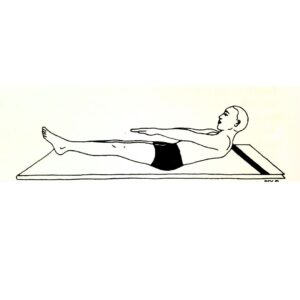It’s important to keep your heart healthy in today’s fast-paced society when stress and sedentary lifestyles are the norm. Since cardiovascular illnesses are among the world’s top causes of death, it is imperative that appropriate preventative measures be taken. While conventional types of exercise such as cycling, weightlifting, and jogging are frequently advised for heart health, yoga is another effective technique that is sometimes disregarded. We’ll dive into the world of yoga in this in-depth book, and discover how its gentle yet potent practices including those taught in yoga teacher training in Rishikesh can greatly enhance cardiovascular fitness and support heart health in general.

Understanding Yoga
The ancient practice of yoga has its roots in India and dates back thousands of years. Yoga integrates physical postures, or asanas, breathing exercises, or pranayama, and meditation to balance the body, mind, and spirit. Its foundation is the notion of holistic well-being. Yoga provides a special combination of physical, mental, and emotional advantages, in contrast to many other kinds of exercise that only concentrate on physical health. People of all ages and fitness levels may benefit from its mild approach, which makes it a great option for those wishing to enhance their cardiovascular health without placing too much strain on their bodies. Through specialized programs like 200 hour yoga teacher training in India, 300 hour yoga teacher training in India, and 500 hour yoga teacher training in India, aspiring yogis may gain a deeper grasp of these practices.
Connection Between Yoga and Heart Health
The link between yoga and heart health has garnered increasing attention from researchers in recent years. Numerous studies have demonstrated the positive effects of yoga on various cardiovascular risk factors, including hypertension, high cholesterol levels, and obesity. One study published in the European Journal of Preventive Cardiology found that practicing yoga significantly lowered blood pressure, cholesterol levels, and body mass index (BMI) in participants with hypertension. These findings suggest that incorporating yoga into one’s routine can be an effective strategy for managing and reducing the risk of heart disease.
Key Yoga Poses for Cardiovascular Health
While yoga encompasses a wide range of poses, several specific asanas are particularly beneficial for improving cardiovascular fitness. Among these are:
- Mountain Pose (Tadasana): This foundational pose helps improve posture, balance, and circulation by promoting alignment and awareness of the body’s alignment.
- Downward-Facing Dog (Adho Mukha Svanasana): This inversion pose encourages blood flow to the brain and heart while also stretching the spine, shoulders, and hamstrings.
- Warrior Pose (Virabhadrasana): Warrior poses strengthen the legs, arms, and core muscles while also increasing stamina and endurance.
- Bridge Pose (Setu Bandhasana): Bridge pose opens the chest and stretches the spine, promoting circulation and stimulating the thyroid gland.
- Chair Pose (Utkatasana): Chair pose strengthens the legs and core muscles while also improving balance and circulation
Poses to Strengthen the Heart Muscle
In addition to the general benefits of yoga for cardiovascular health, certain poses specifically target and strengthen the heart muscle. These poses include:
- Camel Pose (Ustrasana): Camel pose stretches the chest, abdomen, and quadriceps while also improving spinal flexibility and stimulating the heart chakra.
- Fish Pose (Matsyasana): Fish pose opens the chest and throat, stretches the neck and shoulders, and stimulates the thyroid and parathyroid glands.
- Cobra Pose (Bhujangasana): Cobra pose strengthens the back muscles, opens the chest, and stimulates the abdominal organs, including the heart.
Poses to Improve Circulation:
Maintaining good cardiovascular function requires healthy circulation, which may be enhanced by certain yoga positions that target blood flow in all directions. Among these positions are:
- Legs-Up-the-Wall Pose (Viparita Karani): This mild inversion posture encourages venous return, which lowers leg edema and enhances blood flow to the brain and heart.
- Forward Fold (Uttanasana): This pose stimulates the abdominal organs, releases tension in the shoulders and neck, and improves blood flow to the brain.
- Seated Spinal Twist (Ardha Matsyendrasana): Spinal twists release stress in the shoulders and back while massaging the internal organs, enhancing circulation and digestion.
Yoga Poses to Reduce Stress and Anxiety
Chronic stress and anxiety can have detrimental effects on heart health, increasing the risk of hypertension, inflammation, and cardiovascular disease. Fortunately, yoga offers a plethora of tools for managing stress and promoting relaxation. These include:
- Corpse Pose (Savasana): Savasana is a deeply relaxing pose that allows the body and mind to enter a state of deep relaxation and rejuvenation.
- Child’s Pose (Balasana): Child’s pose gently stretches the spine, hips, and thighs while also calming the mind and promoting deep relaxation.
- Breathing Exercises (Pranayama): Various pranayama techniques, such as deep belly breathing, alternate nostril breathing, and breath awareness, can help calm the nervous system and reduce stress and anxiety
It is imperative that you include yoga into your daily practice in order to fully benefit from its heart-healthy effects. Here are some pointers to get you going:
- Start Slow: If you’re new to yoga, start with easy postures that are suitable for beginners. As your strength and flexibility improve, progressively increase the intensity and duration of your practice.
- Be Consistent: To see observable gains in cardiovascular fitness and general wellbeing, try to practice yoga on a regular basis, ideally three or four times a week.
- Pay Attention to Your Body: To prevent overdoing it or getting hurt, pay attention to how your body feels both during and after each yoga session. Then, modify your practice accordingly.
- Make sensible goals: Establish attainable and reasonable objectives for your yoga practice, such as
Precautions and Considerations:
While yoga is generally safe for most people, it’s essential to take certain precautions, especially if you have pre-existing heart conditions or other health concerns. Here are some considerations to keep in mind:
- Consult with Your Healthcare Provider: If you have a history of heart disease, high blood pressure, or other cardiovascular issues, consult with your healthcare provider before starting a new yoga practice to ensure it’s safe for you.
- Listen to Your Body: Pay attention to any warning signs or symptoms during your yoga practice, such as chest pain, dizziness, or shortness of breath, and stop immediately if you experience any discomfort.
- Modify Poses as Needed: Don’t hesitate to modify poses or skip certain asanas if they feel too challenging or uncomfortable for you, and always prioritize safety and self-care.
Yoga offers a myriad of benefits for heart health, ranging from strengthening the cardiovascular system and improving circulation to reducing stress and promoting relaxation. By incorporating yoga into your daily routine and practicing specific poses and breathing techniques aimed at enhancing cardiovascular fitness, you can take proactive steps towards maintaining a healthy heart and enjoying a higher quality of life. Remember to listen to your body, consult with your healthcare provider if you have any concerns, and approach your yoga practice with patience, compassion, and mindfulness. With dedication and perseverance, you can harness the transformative power of yoga, including the insights gained from yoga teacher training in India, to nourish your heart, body, and soul for years to come.



